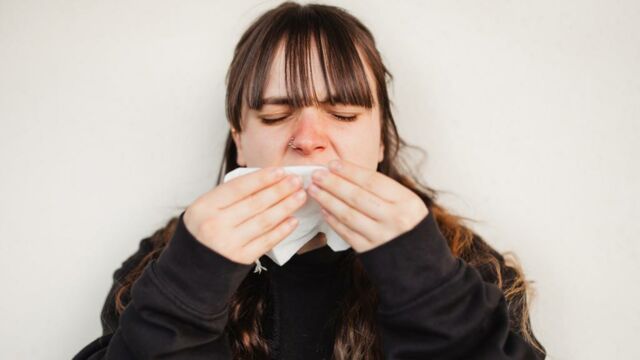This is what the colour of your phlegm reveals about your health

However disgusting it might be to some, it is totally natural, as your body produces mucus a.k.a phlegm every day.
Some people are disgusted by the word ‘phlegm,’ the same way as they are disgusted by the word ‘moist’ – and for this, there’s an explanation.
Discover our latest podcast
Paul Thibodeau from Oberlin College conducted a series of experiments to determine why people hate these kinds of words, and his hypotheses include:
More under this adMore under this ad1. People hate those words due to their connotations to bodily fluids.
2. People hate those words because they are socially pressured to believe that those words are disgusting.
However disgusting it might be to some, it is totally natural, as your body produces mucus a.k.a phlegm every day. According to WebMD:
Mucus, also known as phlegm when it’s produced by your respiratory system, lines the tissues of your body (such as your nose, mouth, throat, and lungs), and it helps protect you from infection.More under this adMore under this ad
Your body makes about a liter of mucus a day. But too much of it, especially somewhere like your lungs, can be annoying and possibly a sign of a health problem.
However, not all phlegm signifies the same thing, and they differ by colour. Are you still with me? Right.
Green or yellow phlegm
According to Healthline, a green or yellow phlegm colour is caused by your white blood cells, which means that your body is fighting an infection. In fact, in most cases, the yellow phlegm is noticeable at the beginning, which then slowly progresses into green phlegm. This is typically noticed in those suffering from bronchitis, pneumonia, sinusitis, or cystic fibrosis.
More under this adMore under this adBrown phlegm
WebMD says that this kind of phlegm colour is not really common, however, ‘it can be a sign of old blood, chronic ongoing inflammation, or tar that loosens up after you’ve quit smoking’. Brown phlegm is usually found in those with bacterial pneumonia, bacterial bronchitis, cystic fibrosis, or lung abscess.

White phlegm
White phlegm is typically connected with a 'cold' in the body, however, this relies on the texture of the phlegm as well as the patient's accompanying symptoms. White phlegm is usually caused by viral bronchitis, gastroesophageal reflux disease, chronic obstructive pulmonary disease, or congestive heart failure.
Black phlegm
Typically, having black phlegm usually signifies that you have been exposed to or inhaled a high amount of smoke or dirt. On the other hand, Healthline warns that ‘Black phlegm could also be caused by a more serious condition, such as lung cancer.’
More under this adMore under this adIt is usually caused by smoking, pneumoconiosis, or fungal infection.
Clear phlegm
As stated at the beginning, your body naturally produces phlegm every day. If your phlegm has a clear colour, but you notice that there’s an increase in production, it usually means that your body is fighting off an irritant, such as pollen or a virus.
No matter what colour, consistency, or volume, if you notice a change in your phlegm, contact your doctor.
Disclaimer: The contents of this article: text, graphics, images, and other materials contained, are strictly for informational purposes only. The content is not intended to be used as a substitute for professional medical diagnosis, advice, or treatment. Please always seek the advice of a qualified health provider with all the questions that you have related to, or about, a medical condition.
More under this adMore under this adSources used:
Plos One: A Moist Crevice for Word Aversion: In Semantics Not Sounds
WebMD: Mucus in Your Chest: Why It Can Happen
Healthline: Yellow, Brown, Green, and More: What Does the Color of My Phlegm Mean?
WebMD: Brown Phlegm: What Causes It?
Healthline: What Causes Black Phlegm, Sputum, and Snot?
Read more:
⋙ Your cold could actually be this common autumn illness
⋙ Here's what you need to know about your asthma during winter